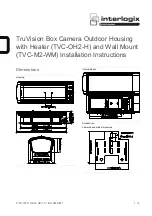
40
Converting RAW Images
The RAW format records the image data as captured by the camera’s image sensor
without further processing by the camera. Although the data is compressed when
recorded, the original data can be completely restored without any loss of quality, making it
possible to obtain high-quality images. Moreover, the RAW image file format is extremely
compact, creating files that are approximately one-third to one-quarter the size of an
uncompressed file (RGB TIFF). Please refer to your Camera User Guide to learn how to set
the camera to shoot in the RAW format.
The process of obtaining high-quality RGB signals from RAW format images (hereafter
RAW images) is called “conversion.” Since ZoomBrowser EX can be used to adjust the
attributes of the original data, you can achieve the effects you wish while maintaining high
image quality. In contrast, image data recorded in the RGB TIFF and other standard
uncompressed file formats is irrevocably processed in the camera and must be further
processed irrevocably by retouching software to change the attributes, which reduces the
image quality.
Please note that ZoomBrowser EX or the TWAIN Driver are required to load RAW images
onto a computer.
Converting RAW Images without Adjusting the Quality
1.
Select a RAW image from the Browser Display Area of ZoomBrowser EX.
2.
Click the [File] menu and select [Convert RAW Images].
The image is converted and saved in a new TIFF (8 bits/channel) file. To learn how
to change the file format, please see “How to Change the File Format.” (
➜
p. 41)
Converting RAW Images with Quality Adjustment
1.
Select a RAW image from the Browser Display Area of ZoomBrowser EX.
2.
Click the [File] menu and select [Convert RAW Images with User Defined
Parameters].
The RAW Image Parameter Settings dialog will display.
3.
Select the quality settings and click [OK].
The RAW image is converted according to the specified parameters and saved in
a new TIFF (8 bits/channel) file. If multiple RAW images are selected, the
parameters are applied only to the first image. When only one RAW image is
adjusted, the changes are also reflected in the remaining images in the selection.
To learn how to change the file format, please see “How to Change the File
Format.” (
➜
p. 41)
















































